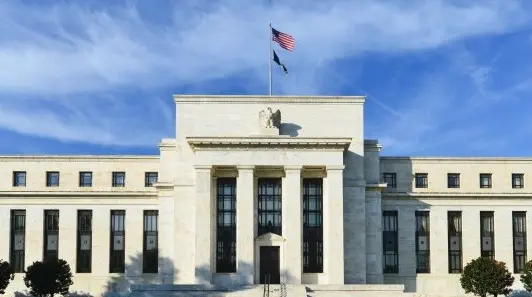A few additional thoughts:
1. Tariff and spending risks were expected, chaos was not
If anything, Lutnick’s quick damage control/mention of a potential walk back of Canada/Mexico tariffs, and the SCOTUS decision forcing USAID payments, both served to reinforce some of the reasons markets were sanguine in the first place. What has come as a surprise is the chaotic and arbitrary nature of White House policy actions and communication.
Moving deadlines, amorphous goals, lack of clear frameworks or procedures, repeated false starts/reversals, etc., have caused uncertainty to spike. Businesses and consumers thrive in a stable environment where changes are well-telegraphed, well- understood, and smoothly implemented. This allows them to plan and confidently make long-term decisions like cap-ex, hiring, expansion, etc.
This is why we now see uncertainty as a bigger economic risk than tariff or spending policies themselves, even if the full economic impact is almost impossible to quantify ex-ante. Policy uncertainty is also harder to roll back than actual policies. But consider the reach. Regardless of how many more employees actually end up getting fired, nearly every government worker, contractor, grant beneficiary, etc. is likely to pull back on spending this year. Any private company that works on government contracts or has a global supply chain or demand base is less likely to undertake cap-ex or hiring. Even businesses that simply rely on government infrastructure could see retrenchment. For example, airlines facing increased delays due to air traffic controller shortages, retailers facing longer or more expensive shipping times with USPS, pharma companies seeing longer drug approval times due to FDA layoffs, or even a hotel or restaurant near a national park seeing decreased traffic due to park closures. To be clear, we are not saying any of these things are necessarily going to happen, but they are the types of risks that many businesses likely weren’t even considering prior to the chaos of the last month.
2. Supply-driven term premium risks have flipped from upside to downside
Higher deficits and a likely UST WAM extension were broadly viewed as an upside risk to yields in 2025. Indeed, supply-related term premium concerns were frequently cited as a factor in the run-up in yields to near cycle highs at the beginning of January. But the quarterly refunding announcement in early February, and subsequent comments from Secretary Bessent, significantly undercut that theme in suggesting that increases to longer-dated UST supply were likely to be pushed off into FY2026 at the earliest.
Additional comments by Bessent suggesting that he and Trump are focused on 10-year yields have also introduced the possibility of actual cuts to duration supply. If the economy starts to falter or inflation risks force the Fed to turn more hawkish, Trump will almost certainly want yields lower. Rather than (unsuccessfully) trying to pressure Powell into cutting the fed funds rate, Bessent’s comments around 10-year yields may suggest the existence of an alternative strategy: cede the front-end to the Fed and instead shift longer-term issuance into bills or short coupons. Cuts in long-term issuance are not something we are currently penciling into our forecasts (we have coupon increases in 2026), but in ~4 weeks the narrative has gone from long-end coupon auction increases being nearly certain to perhaps a 10-15% probability of cuts. Timing wise, this likely wasn’t a proximate trigger of the recent rally, but the flip in term premium risks should have at least created a supportive backdrop for duration.
3. Soft data may matter more this time
In recent years, the divergence between soft and hard data was mostly written off, as soft data weakness didn’t work its way up into the hard data. Part of that disconnect was that upper income consumers (who are of outsized importance to aggregate consumption) were still in good shape, with the soft data drag coming from lower-income cohorts. But if the new downturn in soft data is stemming from the upper-income cohorts, then soft data weakness could actually lead to more of a drag on the hard data. Very hypothetical at this point, but we do think the gap long seen between soft/hard data may continue to tighten.
4. Return of the classic risk-off/flight-to-quality/stock-bond correlation
US equities have been perhaps the greatest beneficiary of the US exceptionalism narrative. While that has faltered in recent weeks, at the time of writing, equities remain within their post-election ranges – suggesting there’s potentially further room to fall if the business environment continues to soften. If risk-off appetite rises, USTs should benefit from the flows. The “demise” of the stock- bond correlation in recent years has been greatly exaggerated, and was largely a function of the singular focus on inflation. With the focus shifting back towards growth, the more typical stock-bond correlation may be returning.



















































































